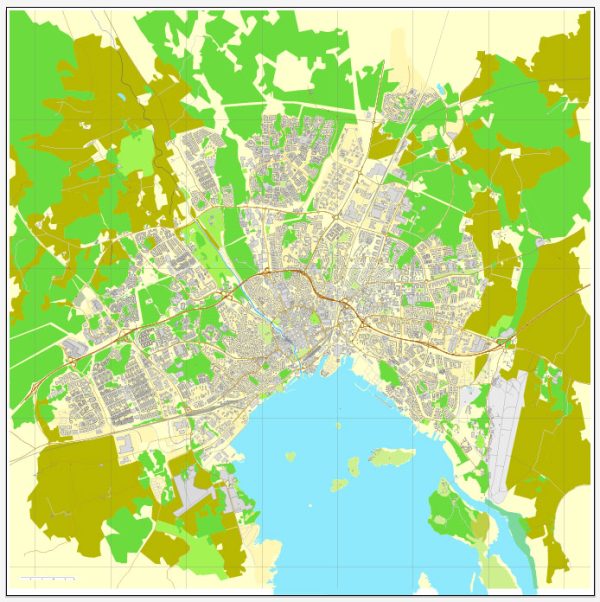Västerås, located in central Sweden on the shores of Lake Mälaren, has a rich history of urban development dating back over a millennium. Here’s an overview of key phases in Västerås’s urban development:
- Viking Age and Early Settlement (8th – 11th Centuries):
- Västerås has ancient roots, and archaeological evidence suggests Viking Age settlements in the area. The proximity to Lake Mälaren facilitated trade and communication with other parts of Scandinavia.
- Medieval Period and Västerås Cathedral:
- The city was officially granted its charter in the early 14th century, marking the beginning of its status as a town. The construction of Västerås Cathedral, initiated in the 13th century, became a significant landmark and a symbol of the city’s medieval heritage.
- Trade and Commerce (Medieval – Early Modern Periods):
- Västerås thrived as a trading center during the medieval and early modern periods. The city’s location along Lake Mälaren and its access to water routes contributed to its economic importance.
- Reformation and Gustav Vasa’s Influence (16th Century):
- The Reformation in the 16th century had an impact on Västerås, and the city played a role in the religious and political changes during this period. King Gustav Vasa’s influence further shaped the city’s development.
- Industrialization (19th Century):
- Like many European cities, Västerås experienced significant changes during the Industrial Revolution. The city’s economy transitioned from traditional trades to more industrial activities, including iron and steel production.
- Asea and Electrification (Late 19th – Early 20th Centuries):
- Asea, a major Swedish electrical manufacturing company, was founded in Västerås in the late 19th century. Asea played a key role in the electrification of Sweden and contributed to the city’s industrial and economic growth.
- Post-World War II Urban Expansion:
- The post-World War II era saw urban expansion and population growth in Västerås. The city developed new residential areas, and infrastructure projects were undertaken to accommodate the increasing population.
- High-Tech Industries and ABB:
- ABB (Asea Brown Boveri), a multinational corporation resulting from the merger of Asea and BBC, became a major player in Västerås’s industrial landscape. ABB continued to contribute to the city’s reputation as a hub for high-tech industries.
- Educational and Cultural Development:
- Västerås has invested in education and cultural amenities. The presence of Mälardalen University and cultural institutions contributes to the city’s vibrancy and attractiveness.
- Sustainability Initiatives:
- In recent years, Västerås has prioritized sustainability initiatives, including renewable energy projects and urban planning focused on environmental considerations. The city aims to be at the forefront of green and sustainable urban development.
Västerås’s history reflects its evolution from a medieval trading center to an industrial powerhouse and, more recently, a modern city with a focus on sustainability, education, and technology. The blend of historical landmarks and contemporary developments makes Västerås a dynamic and diverse urban center in Sweden.


 Author: Kirill Shrayber, Ph.D.
Author: Kirill Shrayber, Ph.D.